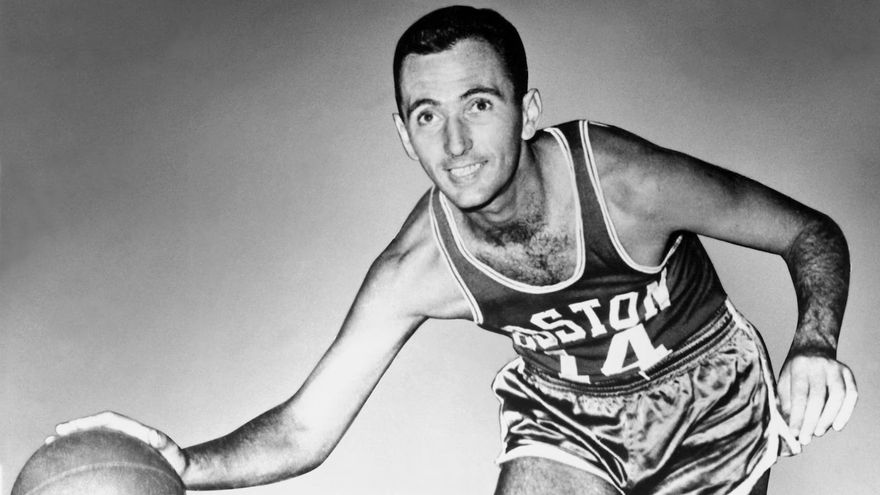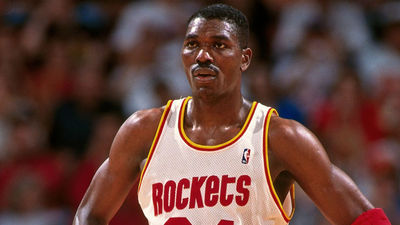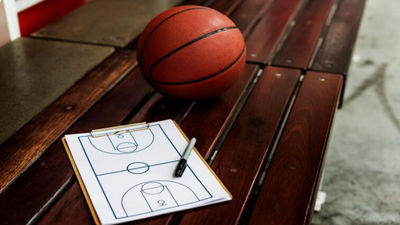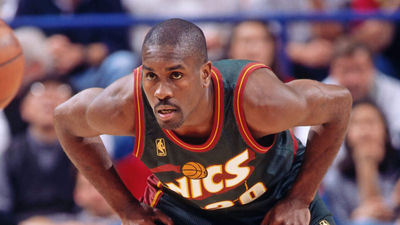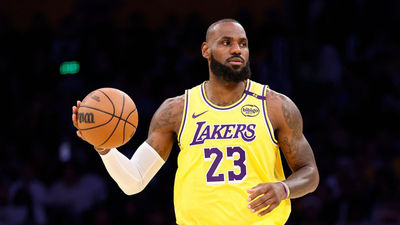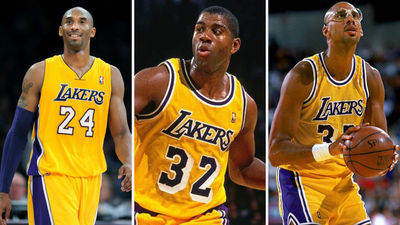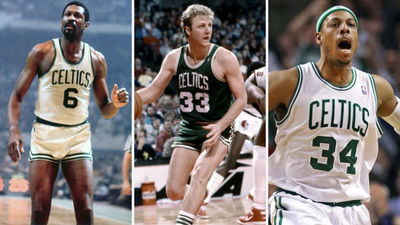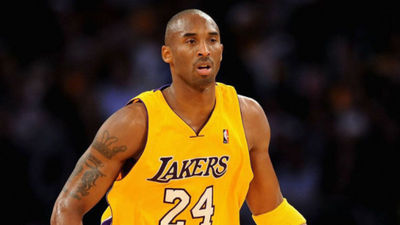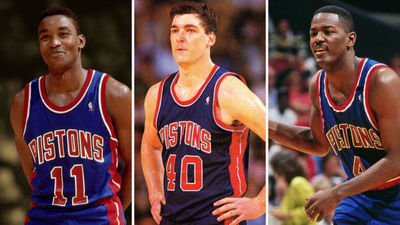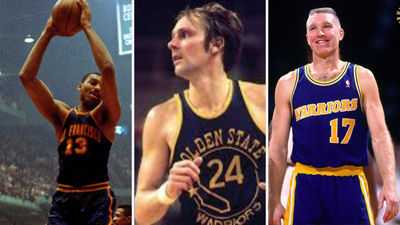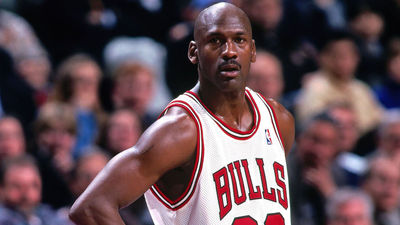Known as "the Houdini of the Hardwood," Bob Cousy (born 1928) was a pioneer in the National Basketball Association (NBA). Many consider him the definitive point guard and an excellent playmaker, one of the best ever to play the game of basketball. Cousy was born on August 9, 1928, in New York City. He was the son of French immigrants from Alsace, Joseph and Julliette (nee Corlet) Cousy. His father was a taxi driver and airline worker, while his mother worked as a secretary and language teacher. Cousy spent his early years in the East Side of Manhattan. He participated in such sports as stickball, boxball, and the stealing of hubcaps, but not basketball.
When Cousy was 12, the family moved from Manhattan to St. Albans, Queens. There, he learned to play basketball for the first time when he was 13. His early years were inauspicious. While attending St. Albans' Andrew Jackson High School, Cousy was cut two different times from the junior varsity squad. However, he was welcomed back after he broke his right arm, and was forced to learn to dribble and shoot with his left. His ambidexterity made him valuable. By the time he was a junior, Cousy was the team's star. As a senior, he won New York City's scoring title. Cousy scored 26 points in his last high school game. Taking up a scholarship offer from Holy Cross College in Worcester, Massachusetts, Cousy entered the school in 1946. He was platooned as a first-year student, 1946-47, the year Holy Cross won the NCAA title. Cousy played regularly beginning in the 1947-48 season, and soon became one of the best known players in college basketball. He had many flashy movies, and was responsible for popularizing the behind-the-back dribble. Yet Cousy was also benched at times because of this play by coach, Alvin Julian. At one point, Cousy considered transferring to St. Johns. He stayed the course and Holy Cross became a college basketball powerhouse. The team had two long un-beaten streaks while Cousy was a member. In the 1947-48 season, it won 18 consecutive games, and in 1949-50, 26 straight. Both streaks ended in the NCAA playoffs, though the 1949-50 team went on to win the National Invitational Tournament (NIT). Cousy himself garnered All-American honors. During his senior season, he averaged 19.4 points per game and was a co-captain. He graduated in 1950 with a B.S. in business. After graduating from Holy Cross, Cousy's career plans were not set in stone. In addition to considering a career in professional basketball, he also thought about opening a driving school. Basketball won out. In the 1950 National Basketball Association draft, Cousy was a first round draft choice by the Tri-Cities Blackhawks, then traded to the Chicago Stags. Because Cousy was well known in Boston, the Celtics and their coach Red Auerbach were vilified for not selecting him in the draft. Auerbach was unimpressed by Cousy's size (about 6′1″ tall) and razzle-dazzle style of play. However, the Stags folded before the 1950-51 season began and the team's players were distributed to three other teams in a dispersal draft. The Celtics drew Cousy's name out of a hat and he negotiated a contract for $9000 per year with the team. Auerbach soon began to appreciate the player he did not originally want. In Cousy's rookie season, 1950-51, the Celtics improved from one of the worst teams in the league to one with a winning record. Though the team lost in the first round of the playoffs, Cousy helped on numerous fronts. He posted impressive numbers, averaging 15.6 points per game and 4.9 assists per game. Cousy was named Rookie of the Year and finished ninth in the NBA scoring race. He was also a first-team All-Star.
What was even more valuable to the Celtics was the way he refined the point guard position. He could see plays that no one else could with his extraordinary peripheral vision. Cousy also had large hands, excellent timing, outstanding reflexes, and a deft touch with the basketball that allowed him to make these extraordinary plays. Cousy had the ability to make passes anywhere with both hands, including blind, behind-the-back passes, passes between his legs and over his shoulders. He could also dribble with both hands, make outside shots, and penetrate. While it took some time for his teammates to get used to his accurate, if unorthodox passes, it made Cousy a hard player to defend. Cousy's playing style also attracted an audience to the struggling young NBA, which welcomed the attention. Cousy made the game fun and people came just to see him.
Cousy gradually improved his game in the early 1950s. In the 1951-52 season, he averaged 21.7 points per game and 6.7 assists per game, but the Celtics again lost in the first round of playoffs. By 1952-53, he was leading the league in assists, averaging 7.7 per game. In the semi-finals that year, Cousy played his most legendary game, scoring 50 points (including 25 in regulation) in a four overtime game against Syracuse on March 21. He also made 30 of 32 free-throw attempts. Though the Celtics made it to the finals, they eventually lost the league title.
Cousy reached the height of his career in the mid-1950s. He led the NBA in assists from 1953-60, and was also always near the top of the league in scoring and free-throw percentage. In 1953-54, Cousy was the second highest scorer in the league, averaging 19.2 points per game and the All-Star Game MVP. A few years later, in 1956-57 Cousy was both the league's MVP and All-Star Game MVP. He led the league in assists (7.5 assist per game) and was eighth in scoring with 20.6 points per game. In 1956, he also became the first NBA player to appear on the cover of Sports Illustrated. The Celtics had the best record in the league and won the NBA championship in seven games over the St. Louis Hawks. With the addition of Bill Russell in the late 1950s, the Celtics won the NBA championship six of Cousy's seven last seasons with the team (except 1957-58). He also appeared in the All-Star Game every year he played with the Celtics, save 1961-62, and was a 12-time all-NBA selection. Cousy was a league leader in other ways: in 1955, he helped organize the NBA Players Union. His affect on the league was recognized near the end of his career. In 1962, a sports editor poll named him the NBA's number one player of all time.
Stats:
Bob Cousy played 14 seasons for the Celtics and Royals. He averaged 18.4 points, 7.5 assists and 5.2 rebounds in 924 regular-season games. He was selected to play in 13 All-Star games. He won 1 MVP award and 6 NBA championships. He was inducted into the Hall of Fame in 1971.
Facts:
Bob Cousy married Julie Corlet, a secretary and French teacher from Dijon.
The younger Bob Cousy spoke French for the first 5 years of his life, and started to speak English only after entering primary school.
Bob Cousy spent his early days playing stickball in a multicultural environment, regularly playing with African Americans, Jews and other ethnic minority children.
That summer, the elder Bob Cousy put a $500 down payment for a $4,500 house four blocks away.
Bob Cousy rented out the bottom two floors of the three-story building to tenants to help make his mortgage payments on time.
Bob Cousy took up basketball at the age of 13 as a student at St Pascal's elementary school, and was "immediately hooked".
Bob Cousy was impressed by the budding star's two-handed ability and invited Cousy to come to practice the following day to try out for the junior varsity team.
Bob Cousy did well enough to become a permanent member of the JV squad.
Bob Cousy continued to practice day and night, and by his junior year was sure he was going to be promoted to the varsity; but failing his citizenship course made him ineligible for the first semester.
Bob Cousy joined the varsity squad midway through the season scoring 28 points in his first game.
Achievements:
6× NBA champion (1957, 1959–1963)
NBA Most Valuable Player (1957)
13× NBA All-Star (1951–1963)
2× NBA All-Star Game MVP (1954, 1957)
10× All-NBA First Team (1952–1961)
2× All-NBA Second Team (1962, 1963)
8× NBA assists leader (1953–1960)
NBA anniversary team (25th, 35th, 50th, 75th)
No. 14 retired by Boston Celtics
NCAA champion (1947)
Consensus first-team All-American (1950)
Second-team All-American – AP, UPI, Look (1949)
Third-team All-American – AP (1948)
No. 17 retired by Holy Cross Crusaders
Presidential Medal of Freedom (2019)
Check out here Chris Paul Biography , Dirk Nowitzki Biography , Karl Malone Biography and Larry Bird Biography

